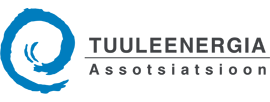Estonian power plants produced 481 gigawatt-hours of renewable electricity in the third quarter of 2021, which is 11 percent less than in the same period last year.
In the first nine months of the year, electricity produced from renewable sources accounted for 40 percent of Estonia’s electricity production and a quarter of consumption, transmission system operator Elering said in a press release.
According to a plan set by Estonia, renewable electricity must cover at least 30 percent of final domestic electricity consumption in this country by 2030.
Renewable electricity production statistics for the third quarter were affected by a reduction in electricity production from biomass, but also by a slight increase in wind electricity production and a major increase in solar electricity production.
Wind accounted for 32 percent of total renewable energy output in the third quarter. The 155 gigawatt-hours of wind power produced during the three months is one-tenth more than a year earlier.
Between July and September, producers received a total of 22 million euros in renewable electricity subsidies, about as much as in the same period last year. In the third quarter, 79 percent of the total produced was eligible for subsidy, with a total of 5.7 million disbursed under that item.
The amount of subsidized per year is capped at 600 gigawatt-hours. By the end of September, subsidy payments had been executed for 60 percent of that amount. According to Elering’s estimate, the limit will not be met by the end of the year.
Electricity from biomass, biogas and waste accounted for 40 percent of renewable energy production in the three months. A total of 193 gigawatt-hours of electricity was produced from these sources between July and September and 8.6 million euros in subsidies was paid out, which represents a continuing downward trend compared to the same period last year.
Only one gigawatt-hour of electricity was produced from hydropower in the third quarter of this year and just over 40,000 was spent on subsidies.
The number of owners of solar panels receiving a subsidy keeps growing in Estonia as the solar plants that applied to join the subsidy scheme at the end of last year are becoming operational, Elering said. In the third quarter of this year, the amount of electricity produced by solar panels and supplied to the grid was 131.4 gigawatt-hours, and 6.8 million euros in subsidy for electricity produced from solar energy and supplied to the grid was paid out.
Due to greater numbers of solar panels and very sunny summer months, this figure has practically tripled in year-to-year comparison. In the third quarter of last year, only 50 gigawatt-hours of solar electricity was produced in Estonia. This year, over a quarter of Estonia’s renewable energy output in the third quarter came from the sun.
A total of 741,000 euros was paid out in high-efficiency cogeneration support in the third quarter of the year, four times the amount disbursed in the same period last year. In total 23 gigawatt-hours of electricity was produced by means of high-efficiency cogeneration.
The subsidies for renewable energy and high-efficiency cogeneration are financed by electricity consumers through the renewable energy charge. Between the beginning of the year and the end of September, Elering collected 69.5 million euros in the levy and paid out 71.5 million euros in subsidies.

